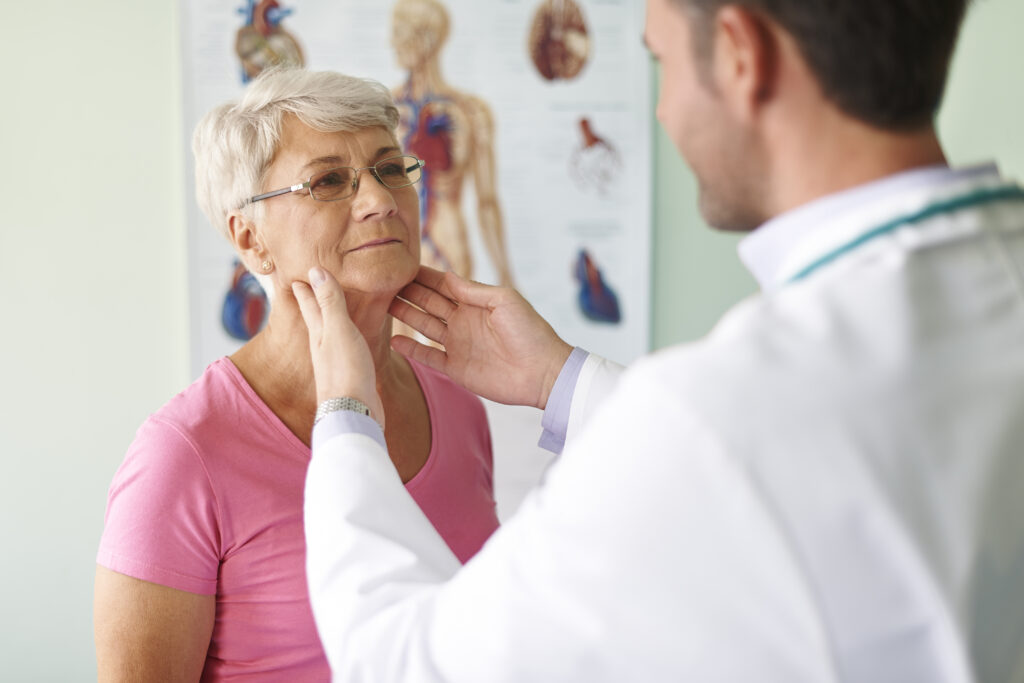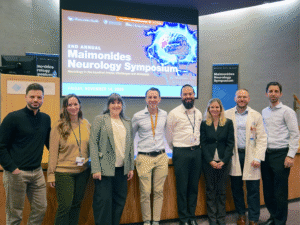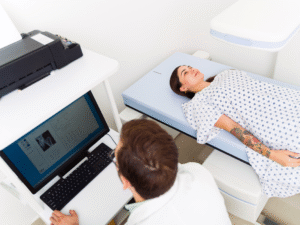Helping patients who have undergone a total laryngectomy recover their speaking ability is critical to their return to normalcy and maintaining a high quality of life post-operation. Multiple options exist to allow patients to recapture their speech, but a tracheoesophageal puncture (TEP) surgery is the gold standard.
Maimonides Medical Center is the only hospital in Brooklyn performing TEP with comprehensive follow-up care, including tracheoesophageal voice prosthesis (TVP) voice restoration and rehabilitation services. Our multidisciplinary approach pairs head and neck surgery with otolaryngology surgery and speech pathology. Together, our specially trained experts enable patients to reclaim as much of their natural voice as possible.
“Following laryngectomy for cancer, voice restoration through tracheoesophageal puncture is the single most important surgical procedure that influences a patient’s perception of cure and wellness,” said Victor Lagmay, MD, director of Head and Neck Cancer Surgery at Maimonides Cancer Center.
What is Tracheoesophageal Puncture Surgery?
TEP is uncommon. In the past three years, Sara Abu-Ghanem, MD, the Maimonides otolaryngologist who performs this surgery, has completed six of these procedures. Dr Abu-Ghanem sees the patients at her laryngology practice, subspecialty of otolaryngology that focuses on voice, swallowing and airway. Although the operation is rare, according to Dr. Abu-Ghanem, it’s transformative for patients who have lost the ability to speak.
The procedure itself is relatively straightforward. It’s intended for patients who want to reclaim their natural voice after cancer treatment. To have the operation, patients must be cancer-free.
Patients have this procedure under general anesthesia during or several weeks after total laryngectomy. Dr. Abu-Ghanem uses the stoma created in the total laryngectomy as an access point, so surgery is transdermal and requires no additional incisions except the puncture site.
During the procedure, she opens the patient’s mouth to directly visualize the trachea and esophagus. After creating a small hole, roughly the size of a pencil eraser, in both the tracheal and esophageal walls, she places a silicone valve called a tracheoesophageal voice prosthesis (TVP) to connect both tubes.
TVP is the more natural alternative to the battery-powered electrolarynx that produces a computerized voice.
“Air comes from the trachea, through the valve and into the esophagus. That air moves to the top of the esophagus, causing those tissues to vibrate. And the patient moves their lips to produce the words and sounds we hear,” Dr. Abu-Ghanem said. “We’re not creating a voice box, but a way to phonate so patients can communicate with their loved ones.”
Collaborating for Patient Success
Dr. Abu-Ghanem works closely with Dr. Lagmay and Alexandra Soyfer, MS, Assistant Director for Rehabilitation and Speech-Language Pathology at Maimonides, to successfully treat these patients and restore their voices. It’s a unique multidisciplinary collaboration that improves patients’ overall quality of life. Soyfer is the only speech pathologist in Brooklyn providing this specialized service.
Dr. Lagmay refers patients pre-surgery to Soyfer, specialist in voice restoration, to discuss options and explain the post-surgery progression towards oral communication. After he performs the total laryngectomy, he refers patients back to Soyfer to again discuss their communication options, including TEP/TVP, the electrolarynx and esophageal speech. For patients interested in TEP/TVP, she provides a video that explains the procedure and discusses the various rehabilitation techniques around speaking and swallowing. If a patient is a good candidate for TEP, the next step is to see Dr. Abu-Ghanem for evaluation and to come to a decision on surgery together.
Within a few days of undergoing TEP/TVP, patients return to Soyfer to ensure the valve is functioning properly and for additional speech therapy. During these sessions, she teaches them how coordinate their breathing and speaking, and provides swallow assessment and intervention as needed. She also provides training on how manage their valve and accessories.
“Patients must learn to coordinate their breathing by covering their stoma and directing air to the prosthesis,” she said. “When they cover the opening in their neck, they can’t breathe, so it’s a learning process that takes practice.”
Soyfer also teaches patients how to clean their prostheses daily and ensures they have all the necessary supplies for maintenance. She also has special training to replace the prosthesis. The first valve generally lasts a year. After that, patients need a new one every three to six months. Patients also continue regular follow up with otolaryngology to ensure no cancer recurrence and that the functions of voice, swallowing and airway are all intact.
The Maimonides Difference
Our multidisciplinary TEP/TVP team brings together years of experience and additional training for this procedure. By working together closely, Maimonides clinicians provide life-changing care for patients who have already overcome significant obstacles of health and wellness.
“Not many otolaryngologists or other related specialists feel comfortable doing this procedure. There are risks associated with it, and it does require life-long follow-up,” Dr. Abu-Ghanem said. “At Maimonides, we eagerly make that commitment to our patients.”
We look forward to working with you and your patients who need general surgery, otolaryngology surgery, or speech pathology services. To make a referral, call (718) 283-6260; or for speech pathology services only, call (718) 283-8961.




